A Journey to the Underground River in Sabang, Philippines by Tim Ghazzawi:
The taxi driver took two hours to navigate the five miles between the Manila airport and my hostel. A whiplash-inducing ride in stop-and-go traffic that saw us weave around buses and jeepneys (look em’ up!), motorbikes, regular bikes, and tuk-tuks. Horns blared like a trombone orchestra. My first views of the Philippines’ capital city obscured by the noxious black exhaust coating the air. Afterward I swore off ever renting my own transport in the name of safety and sanity. I kept that promise to myself until this past week when I boarded my own motorbike and ventured to Sabang, a small beach town home to the world’s longest navigable underground river.
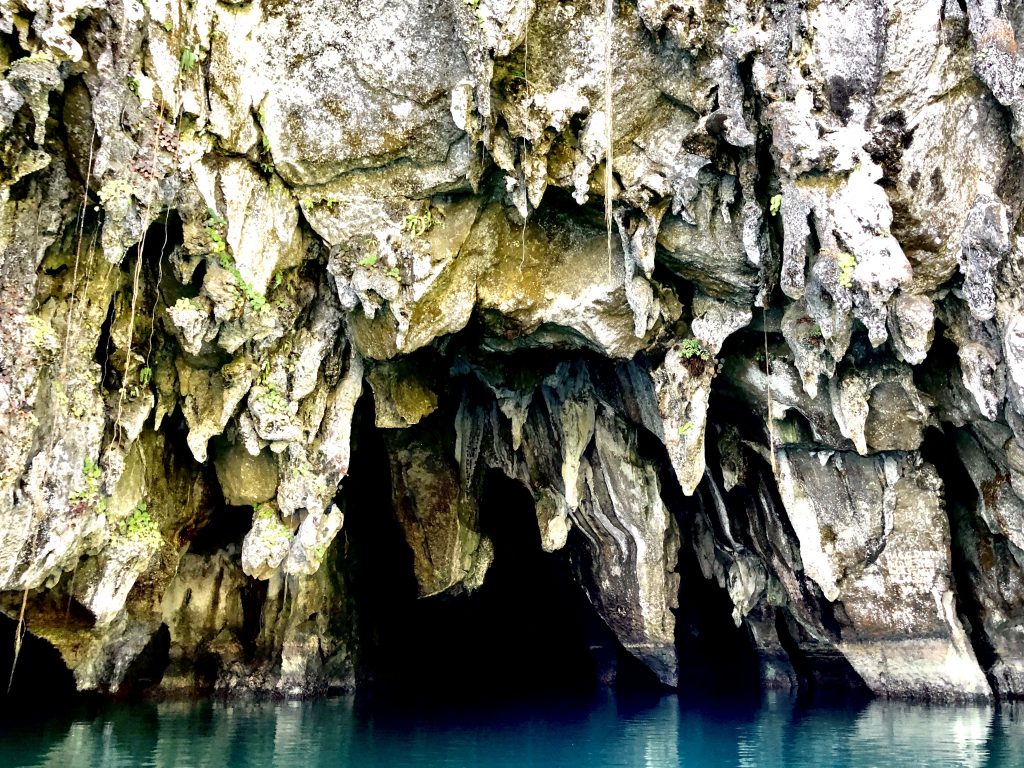
Declared a UNESCO World Heritage Site and one of the New 7 Wonders of the World, the Puerto Princesa Underground River (or PPUR) runs five miles beneath an enormous cave system off Sabang’s shore. It’s been forming for millions of years as streaming water has carved passages into the limestone rock mountain, creating what are now some of the biggest cave halls in the world. Its highest ceiling reaches 200 feet. Half of the river can be reached by canoe and half a mile of it is open to the general public. I just had to get there.
Thankfully, driving the western coast of the island of Palawan required none of the death-defying traffic maneuvers I would have needed in Manila. This two-hour ride was Sunday morning lazy with the right amount of sunshine and breeze. Lush palm jungle bordered me on both sides. My right eye took turns with my left to admire the scenery. You know those car rides we’ve all had when we get to our destination but don’t remember how we got there? Not in a bad way, like we were drunk or something. But because the route was so simple and our thoughts so free-flowing and the music too contagious not to sing your heart out? That’s what I had. My ride was one long moment instead of minutes I counted down or added up.
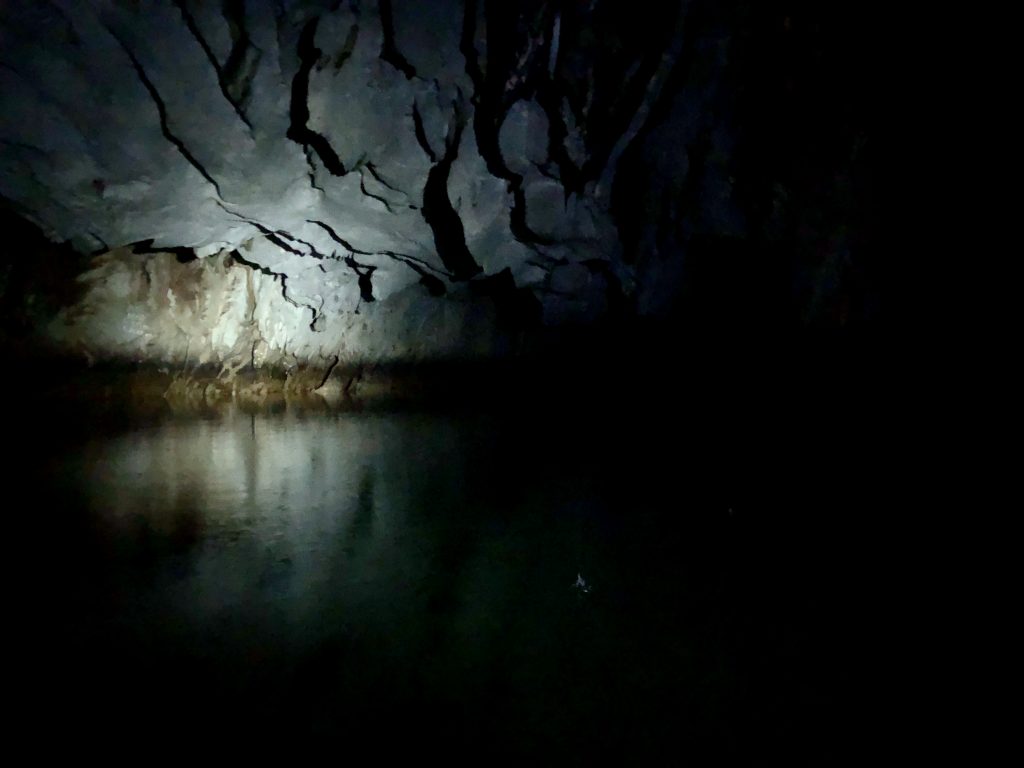
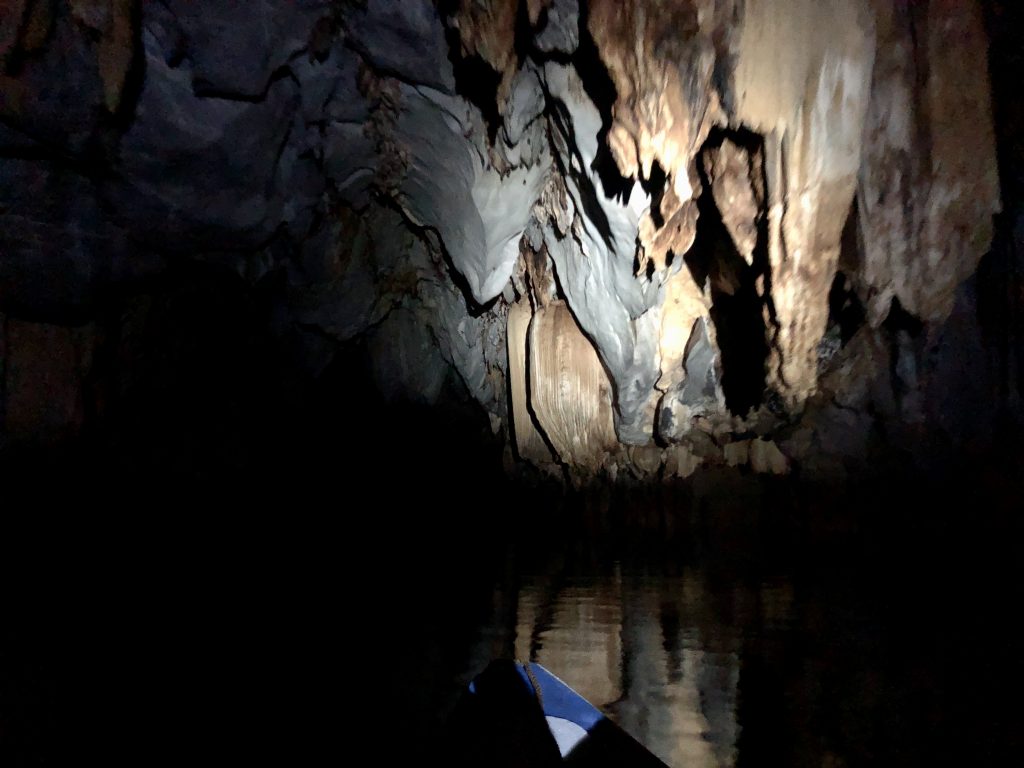
At Sabang’s wharf I boarded a motorboat and then a canoe to get to the river. Jagged stalactites hung like giant shark teeth in the entrance. A contrast to the inviting turquoise water they were reflected in. The canoe driver paddled slowly beyond these formations into the dark tunnel. I’d been given a single earbud to listen to an audio guide as we traveled. A woman with a calm voice and a slight Filipino accent began to speak and the history of the river and caves unfolded. Admittedly I don’t remember much of what was told to me over the course of the next hour. I spent the entirety of my time with my neck arched back so that I stared straight into the stalactites pointing down at me. It was so dark that it felt like I needed to abandon my other senses to focus on my sight. Something I do remember from the audio guide are the names of the different formations inside the caves. I don’t know this for sure, but I’m assuming the geologist who originally mapped these caves was a believer. He or she saw Jesus in everything. There are rocks said to look like Jesus in the manger, Jesus at the Last Supper, and Jesus on the cross. That’s a lot of Jesus for one cave and I’m going to be honest: I just didn’t see it. Though perhaps the dim light of my canoe driver’s torch wasn’t strong enough to bring the rocks to life. My favorite structures appeared at the “market” where I tried to imagine the squash blossoms and banana hearts and mushrooms the guide described.
In the deepest part of the cave, the canoe driver turned off his light. I waved my hand in front of my face and saw no evidence I had a hand at all. The cries of bats echoed off the walls. The seconds of darkness became more peaceful than I expected. It gave me confidence knowing I could feel okay while also feeling out of control. A weight lifted from my shoulders. Then something fell literally onto my shoulders. I hoped it was the same magic water that had helped to form these caves. Then I was warned it might be bat droppings.

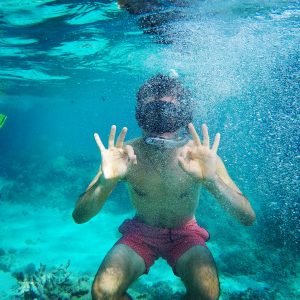
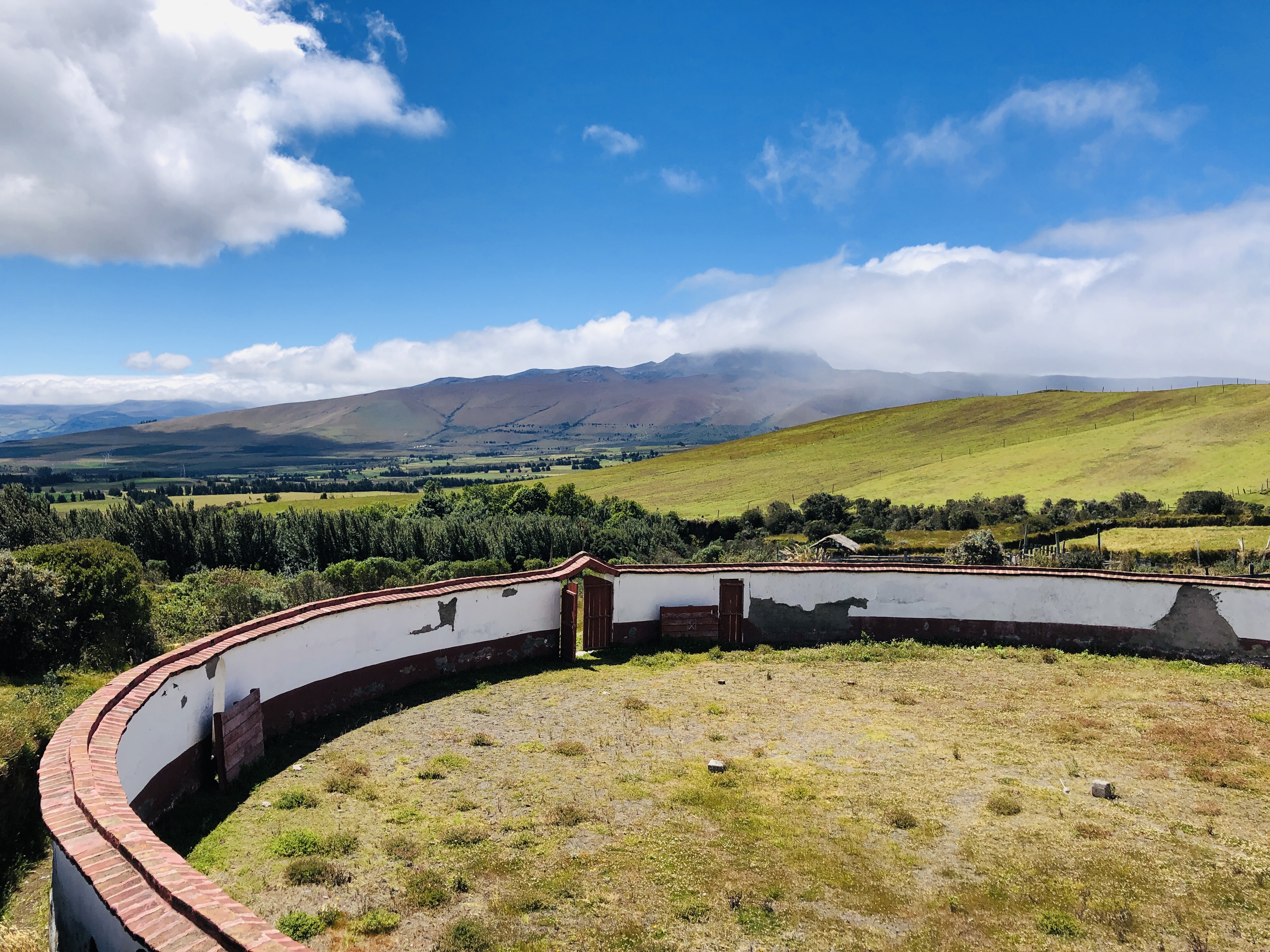





“That’s a lot of Jesus in one cave” dying laughing